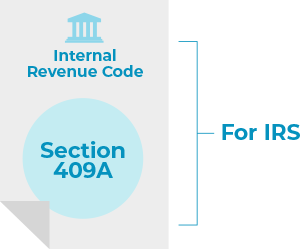In the fast-paced private company landscape, understanding Online Capital Formation dynamics is not just a strategic advantage – it’s imperative. As we commemorate the twelfth anniversary of the JOBS Act in 2024, it’s evident that evolving capital-raising regulations have paved the way for a transformative approach to business financing. In this ever-changing scenario, everyone in the private market needs to grasp the significance of Online Capital Formation to unlock myriad opportunities for their ventures.
Table of Contents
- Making Capital Formation Accessible for Private Enterprises
- The Complexity of RegCF and RegA+
- Beyond Conventional Crowdfunding
- Seizing the Future with Online Capital Formation
- Final Insights
Making Capital Formation Accessible for Private Enterprises
At its core, the democratization of capital is a driving force behind Online Capital Formation. Gone are the days when crowdfunding merely conjured images of Kickstarter campaigns. Today, it has evolved into a sophisticated financial tool, especially with the maturation of Regulation CF (RegCF) and Regulation A+ (RegA+) over the past decade.
RegCF and RegA+ are two sets of rules established by the U.S. Securities and Exchange Commission (SEC) to govern equity crowdfunding. They were both introduced as part of the JOBS Act (Jumpstart Our Business Startups Act) and their primary goal is to make it easier for businesses and startups (from small to enterprises) to raise capital by offering and selling securities online.
The concept of digital securities involves representing traditional financial instruments (such as stocks or bonds) in digital form using blockchain technology. Digital securities enable more efficient and transparent transactions, and they can be traded on digital securities exchanges.
The Complexity of RegCF and RegA+
RegCF and RegA+ transcend the traditional crowdfunding model, where entrepreneurs pitch ideas for product launches. Instead, they empower companies to transform investors into shareholders. The focus has shifted from merely selling stories to selling stock – a nuanced shift that goes beyond the conventional understanding of crowdfunding.
In order to fit in each of these regulations, companies must pass the eligibility criteria for each of them and provide certain disclosures to investors, including information about their business, financial condition, and the terms of the offering. The level of disclosure required is less extensive compared to traditional IPOs, but it aims to provide investors with enough information to make informed investment decisions.
Beyond Conventional Crowdfunding
These regulations are more than regulatory frameworks; they’re a paradigm shift that offers private companies a more expansive and flexible avenue for raising capital. They allow them to raise capital from both accredited and non-accredited investors, which includes their own clients and employees. RegCF allows them to raise up to 5 million dollars while with RegA+, it’s possible to raise up to 75 million dollars.
Equity Crowdfunding is an alternative pathway to access capital markets, offering a more cost-effective and less burdensome option than a full IPO. It has helped more people invest in early-stage funding, making investment opportunities available to a wider range of investors. With these regulations, you can leverage the internet and technology to connect with more investors and grow the business.
Seizing the Future with Online Capital Formation
While the term “crowdfunding” remains rooted in popular imagination, it falls short of encapsulating the depth and complexity of RegCF and RegA+. We must recognize these exemptions have matured into a robust mechanism that demands a more nuanced understanding. They must carefully navigate the regulatory requirements and considerations as this is monitored by the SEC aiming to ensure investor protection and maintain market integrity.
To shed light on this evolution, we have collaborated with industry experts, including Sara Hanks, CEO/Founder of CrowdCheck, and Douglas Ruark, President of Regulation D Resources, now known as Red Rock Securities Law. Together, we aim to redefine the landscape by emphasizing what we believe heralds a new era in crowdfunding: Online Capital Formation.
Additionally, success in equity crowdfunding often depends on effective marketing, transparent communication, and a compelling value proposition for investors. From accessing diverse investors to increasing brand visibility, this overview highlights seven key benefits. Take a look at the chart.
| # | Top 7 Benefits of Democratizing Capital Formation |
|---|---|
| 1 | Access to Diverse Investors |
| 2 | Engagement of Customers |
| 3 | Increased Brand Visibility |
| 4 | Flexibility in Fundraising |
| 5 | Gathering Early Feedback |
| 6 | Cost-Effectiveness |
| 7 | Potential for Liquidity |
A Closer Look at the Top 7 Benefits of Democratizing Capital Formation
Final insights
As private company owners and managers, the onus is on you to comprehend the evolving dynamics of Online Capital Formation. It’s not merely a trend. Embrace the opportunities, stay informed, and position your venture at the forefront of this new era in crowdfunding. The journey begins with understanding. If you’re looking to raise capital and want to know more about your company’s suitability and which steps to take first, book a call with one of our specialists.









































